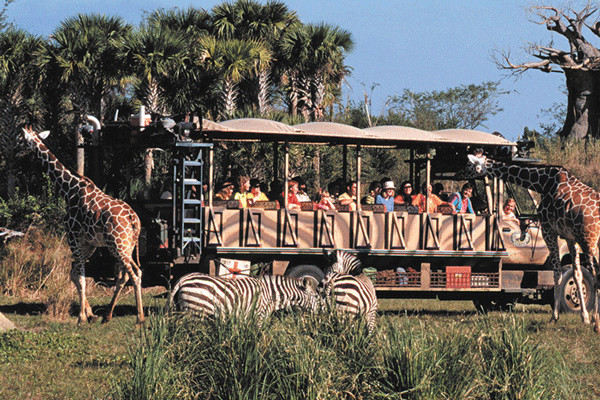
One is the largest and most popular game reserve in Zimbabwe, once famed for being home to the Big Five before poachers penetrated the area and decimated the wildlife numbers, in the process completely wiping out others.
environment By Chipo Masara

The other is a zoological theme park at the sunny Walt Disney World Resort in Bay Lake, Florida, US — owned and operated by The Walt Disney Company. The one major thing the two areas located in opposite parts of the world have in common is that they are both home to a large number of animal species, as well as different birds. That, however, is as far as their similarity goes.
The Zimbabwe Parks and Wildlife Management Authority (ZimParks)-run Hwange National Park is the largest wildlife reserve in Zimbabwe, measuring approximately 14 650km2. When things were still going well at the park, it boasted of a tremendous selection of wildlife with over 100 species of mammals and nearly 400 bird species recorded. But along the way and as Zimbabwe’s economic fortunes took a downward turn, wildlife in the area has continually become endangered. While the threat posed by marauding poachers to the animals has always been downplayed by authorities, it took the 2013 cyanide poisoning that killed what is widely believed to be over 300 elephants as well as hundreds of predatory species that fed on the poisoned elephant carcasses, to alert the country — and indeed the whole world — of the danger the animals are in. That the poachers that committed the greatest environmental crime to ever have been witnessed in the country managed to penetrate the park well enough to actually camp inside it for days — as evidenced by the discovered cooking utensils and other camping materials they left behind — proved how unsafe animals in this park had become.
Besides the accelerating rate of poaching — with the poachers continually devising more devilishly effective ways — the animals face further threat following the government’s decision to export them to countries such as China for a profit. While ZimParks insistently claims that the country has more wildlife than it can handle, many believe it is a mere excuse to make a fortune out of the country’s wildlife, with little, if any, of the money going towards genuine conservation efforts.
Even as the authorities are continually coming up with creative ways to make money out of the country’s wildlife, animals in the Hwange National Park — an area that was, like the rest of the country, ravaged by the El Niño-induced drought — are thirsty as they have to share the little water available, a situation that has been observed to prove dire on smaller animals such as eland that have to wait until all the bigger and more vicious animals have had their turn at the few water sources available.
On the other side of the world there is the Disney Animal Kingdom, known to the world as one of the happiest places both for the animals and the people that pay to go and enjoy them. Although most of the animals there were imported into the park, the Disney crew managed to create what resembles a real savannah, an area where the animals have reportedly settled in almost as if they were in their natural habitat. Achieving such a level of success has taken a lot of research and conservation efforts by the Walt Disney Company involving its animal species.
So successful has been the company that since the park’s opening in 1998, the resident elephant herd has reportedly produced six calves, with the giraffe herd having produced four new-borns, raising the total number to 11. In 1999, one of the park’s white rhino reportedly gave birth to a female calf named Nande and in 2006, Nande and Hasani (another of the park’s rhinos) were transferred to Uganda’s Ziwa Animal Sanctuary, in the first attempt to re-introduce white rhinos to the country where they had become extinct following civil strife. Nande then gave birth to a male calf — the first such birth in Uganda in over 25 years. Meanwhile, by January 2010, eight white rhinos had been born at Disney Animal Kingdom since the park’s opening.
- Chamisa under fire over US$120K donation
- Mavhunga puts DeMbare into Chibuku quarterfinals
- Pension funds bet on Cabora Bassa oilfields
- Councils defy govt fire tender directive
Keep Reading
In the meantime, according to an inside source, all the rhinoceros have since been wiped out by poachers in the Hwange National Park.
Owing to the amount of care and protection that they are getting, animals that are enclosed at the Disney Animal Kingdom are clearly fairing much better than those in Hwange National Park. This observation seems to negate all the belief I had that animals that are left to roam free in their natural habitats are better off. Instead, it would seem in time to come, it is only those in areas such as Disney Animal Kingdom that will be left standing as poachers and other factors would have long wiped out those in so-called natural habitats.
Feedback email: [email protected]











